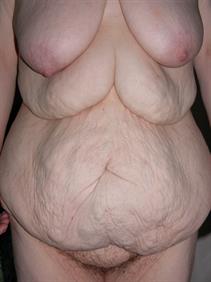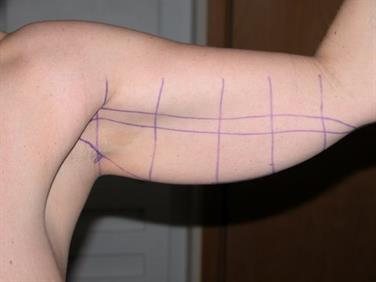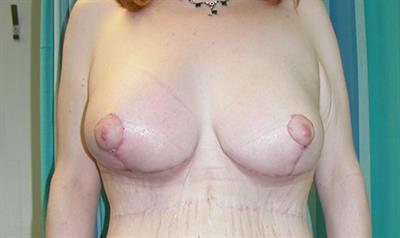After consulting with your surgeon, you will be given further information to read. This helps you fully understand the proposed surgical treatment. You should read this carefully understanding the benefits, risks and recovery time. You will also have photographs taken for your medical records.
To request a printed copy of the guide, please email the Secretariat or download a PDF of the guide click here
Guide updated 2017
What happens before surgery?
Most body contouring surgery requires a general anaesthetic (being asleep for the
procedure). You will usually attend the hospital on the morning of your surgery at which time your surgeon will see you again to confirm the operative plan, confirm your consent to proceed and will usually mark you. You should also have had photographs taken for your medical records. Your anaesthetist will also see you to confirm your health for a general anaesthetic. You will have been asked to stop eating food for six hours prior to your surgery and drink only water until two hours before your surgery, then nothing else. Please take your regular medications on the morning of the surgery with a small amount of water unless previously advised not to.
Apronectomy
What is an apronectomy?
An apronectomy is procedure to remove the excess hanging skin and fat over the lower abdomen. It is not as extensive as an abdominoplasty (tummy tuck) and carries fewer risks.
It involves cutting away the excess tissue in the pattern of a horizontal ellipse and suturing the wounds together. This will leave you with a horizontal scar across the lower aspect of the abdomen, similar to a caesarean section scar, but longer at each end. This procedure does not address tissue excess in the middle and upper abdomen.
How is it performed?
The operation requires a general anaesthetic and may take 1.5–2 hours to perform. You will stay in hospital for 1–2 nights after the surgery. You may or may not have drains, which are tubes that come from underneath your wound to drainage bottles. If these are used, they are to help reduce fluid build up and tend to stay for 1–2 nights then they are simply removed.
What are the benefits?
The aim of surgery is to remove the excess hanging tissue on the lower abdomen. This will help improve symptoms related to the excess skin such as rashes, blistering, irritation and also improve mobility by removing the heavy hanging tissue, which may aid in exercise and further weight loss.
What is the recovery?
Following your surgery you will have a 1–2 night stay in hospital. During this time, you will be encouraged to walk and shower and wound care advice will be given. Once you are discharged home you will be seen again in a dressings clinic to check your wounds.
Stay mobile and well hydrated at home. In the first week you should be within the home. In the second week after the team has ensured your wounds are mending well, you could venture out of the home for short walks, but not drive for two weeks. Time off work is usually one month and time off sport is usually six weeks. You will be seen regularly by your medical team for the first twelve weeks. A slow continuous increase in activity is advised during this period. You may need an abdominal corset during this time too.
Abdominoplasty
What is an abdominoplasty?
An abdominoplasty or ‘tummy tuck’ is a more extensive operation than an apronectomy. It involves removal of excess skin and fat over the abdomen. The technique can be varied to address upper abdominal tissue excess, lower abdominal tissue excess or excess in the midline. Before the operation, the degree of abdominal support provided by your muscles will be assessed. If your rectus abdominus (six pack) muscles are found to be weak and spread apart, this can sometimes also be corrected during the same procedure with a divarification repair.
The scar pattern will vary based on the exact area of excess being addressed.


Before and after – the abdominoplasty improved the lower part of the anterior abdomen. The patient subsequently needed a reverse abdominoplasty to further improve the upper abdomen.
How is it performed?
The operation requires a general anaesthetic and may take three to four hours to perform. You will stay in hospital for one to two nights after the surgery. You may or may not have drains, which are tubes that come from underneath your wound to drainage bottles. If these are used, they are to help reduce fluid build up and tend to stay for two to three nights then they are simply removed.
What are the benefits?
The aim of surgery is to remove the excess hanging tissue over the abdomen. This will help improve symptoms related to the excess skin such as rashes, blistering, irritation and also improve mobility by removing the heavy hanging tissue which may aid in exercise and further weight loss.
An abdominoplasty is a larger operation than an apronectomy because it addresses the entire anterior abdomen. There is both a functional and aesthetic improvement after this surgery.
Belt lipectomy/lower body lift
What is a belt lipectomy/lower body lift?
A belt lipectomy is procedure to remove the excess hanging skin and fat over the lower abdomen and the lower back/flanks, and lift the buttocks. A lower body lift is a similar operation, but provides a greater lift when necessary.
The excess over the abdomen is removed in the same way as an abdominoplasty. However, the scar will now extend all the way across the lower abdomen around the back to completely follow your waist. This allows removal of excess tissue at the back and will lift the buttock area at the same time.
How is it performed?
The operation requires a general anaesthetic and may take three to five hours to perform. You will stay in hospital for two to three nights after the surgery. You may or may not have drains, which are tubes that come from underneath your wound to drainage bottles. If these are used, they are to help reduce fluid build up and tend to stay for two to three nights then they are simply removed. You will often have a urinary catheter that will be removed once you are comfortable enough to pass urine yourself.
What are the benefits?
The aim of surgery is to remove the excess hanging tissue over the abdomen and flanks, and to lift the buttocks. This will help improve symptoms related to the excess skin such as rashes, blistering, irritation and also improve mobility by removing the heavy hanging tissue, which may aid in exercise and further weight loss.
Brachioplasty
What is a brachioplasty?
A brachioplasty, or upper arm lift, addresses tissue excess from the armpit to the elbow. In some cases, it can be extended to address excess tissue on the upper outer parts of the chest and armpit. The operation involves removal of the excess tissue in the upper arm and leaves a scar on the inner aspects of both arms and may also extend onto the side of the chest.


Before and after brachioplasty
How is it performed?
The operation requires a general anaesthetic and may take one to two hours to perform. You will stay in hospital for one to two nights after the surgery. You may or may not have drains, which are tubes that come from underneath your wound to drainage bottles. If these are used, they are to help reduce fluid build up and tend to stay for one to two nights then they are simply removed. The operation usually involves surgical removal of the excess skin in the upper arm, but may also use liposuction to help reduce the amount of fat in the area. Following the surgery, you will need to wear compression garments on your arms for the first few weeks.
What are the benefits?
The aim of surgery is to remove the excess hanging tissue over in the upper arms and sides of the chest. This will help improve symptoms related to the excess skin such as rashes, blistering, irritation and also improve mobility by removing the heavy hanging tissue, which may aid in exercise and further weight loss.
Inner thigh lifts
What is an inner thigh lift?
An inner thigh lift is a procedure to remove excess tissue from the upper inner thighs. It can tighten and lift tissues from the thighs to the groin. It will leave scars in the groin creases as well as the inner aspects of the thighs running down to the knees.
How is it performed?
The operation requires a general anaesthetic and may take two to three hours to perform. You will stay in hospital for two to three nights after the surgery. You may or may not have drains, which are tubes that come from underneath your wound to drainage bottles. If these are used, they are to help reduce fluid build up and tend to stay for two to three nights then they are simply removed. You will often have a urinary catheter that will be removed once you are comfortable enough to pass urine yourself.
What are the benefits?
The aim of surgery is to remove the excess hanging tissue from the inner thighs and lift them at the same time. This will help improve symptoms related to the excess skin such as rashes, blistering, irritation and also improve mobility by removing the heavy hanging tissue, which may aid in exercise and further weight loss.
Mastopexy
What is a mastopexy?
A mastopexy procedure addresses female breasts that hang low and droop. It can also be used to correct volume loss with the use of silicone implants. It leaves scars around the areolae and also down in a vertical line across the front of the breasts extending to a line across the underside of the breasts.
How is it performed?
The operation requires a general anaesthetic and may take one to two hours to perform. You will stay in hospital for 1 night after the surgery. You may or may not have drains, which are tubes that come from underneath your wound to drainage bottles. If these are used, they are to help reduce fluid build up and tend to stay for one to two nights then they are simply removed on the ward.
What are the benefits?
The aim of surgery is to help lift and reshape the breasts. It can help with problems associated with excess breast skin, such as rashes, blistering, irritation and also improve mobility by removing the heavy hanging tissue, which may aid in exercise and further weight loss.


Before and after mastoplexy